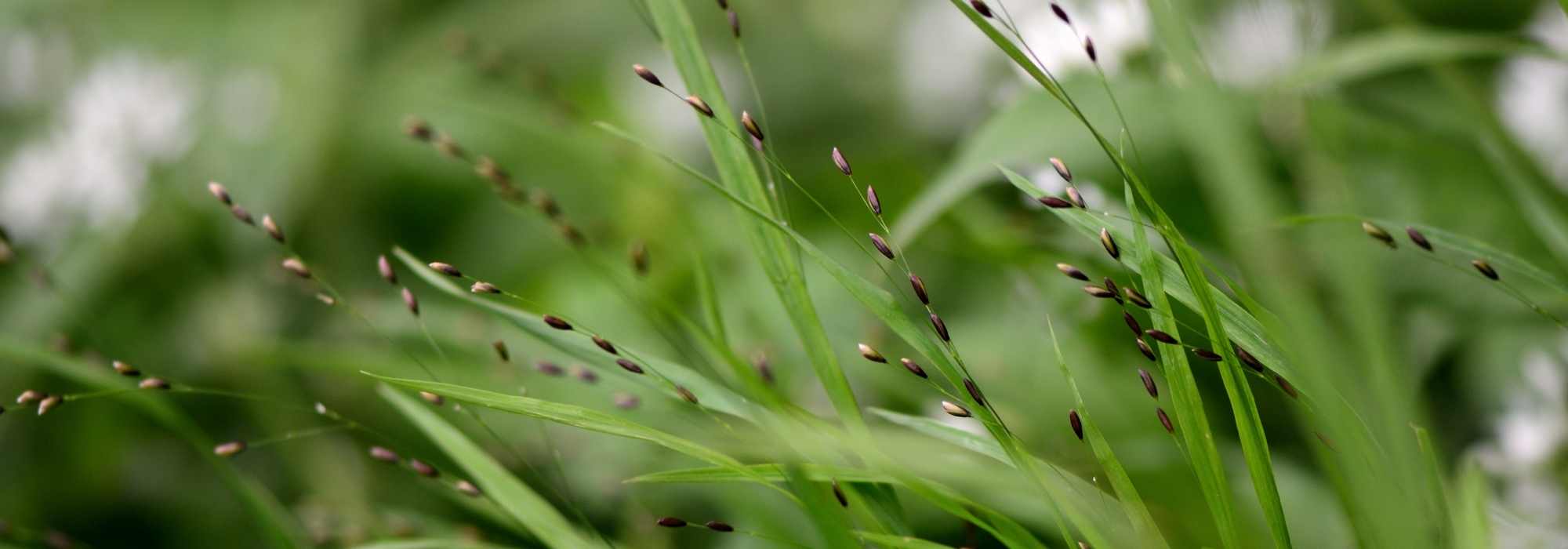
Melica: planting, growing and care
Contents
Melica in a nutshell
- This is a small, graphic, and luminous perennial grass
- It flowers in late spring and summer with delicate spikelets
- A sun or partial shade plant, depending on the species, it forms graceful, flowing clumps with fine foliage
- Extremely hardy and very easy to grow, it requires little care
- It thrives in natural or contemporary gardens, in borders, rockeries, and even pots
The word from our expert
Melica, also known as melic grass, is a lovely ornamental grass prized for its delicate summer flowering in fine spikes of flowers. Creamy-white and silky in Melica ciliata (the ciliate melic grass), purple in Melica altissima ‘Atropurpurea‘, and delicate like a shower of rice in Melica uniflora var. albida, they rise above the swaying mass of fine, graphic foliage that persists in mild winters.
It forms well-defined clumps, ranging from 20 cm to 1.20 m in height when in flower for Melica altissima, the tallest of the genus. This is a grass with a light and delicate structure.
It is an easy-care grass, very hardy and exceptionally easy to grow: simply cut back the foliage in late winter, around March. Among the melic grasses, you’ll find species suited to sun, partial shade, or even full shade, with some tolerating drought and others preferring moist soil.
With its graceful, swaying silhouette, it adds structure, poetry, and volume to naturalistic borders, rockeries, pathway edges, and even containers. Choose the one that suits you best!
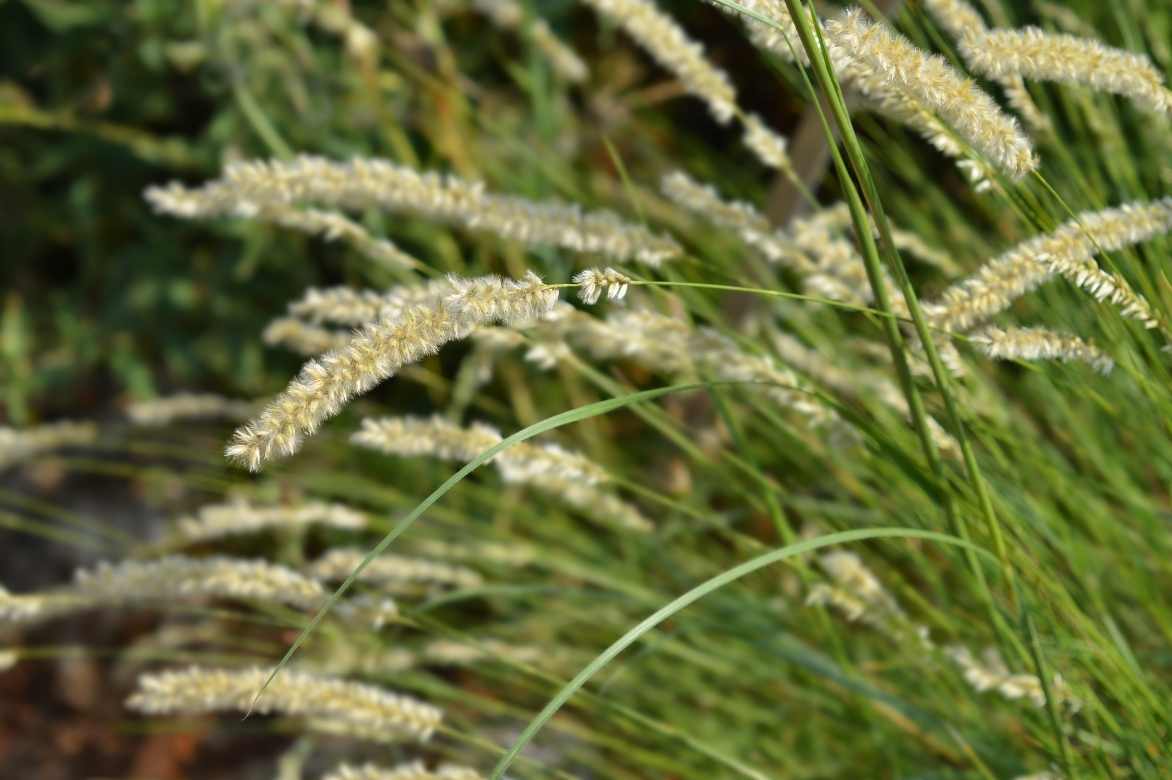
Melica ciliata
Description and botany
Botanical data
- Latin name Melica
- Family Poaceae
- Common name Melica
- Flowering May to August
- Height 0.20 to 1.20 m
- Exposure Sun, partial shade, shade
- Soil type Clay-loam (rich and light), Stony (poor and well-draining)
- Hardiness –15 °C and beyond
Melica, or melic grass, is a perennial grass from the large Poaceae family. It grows wild in meadows and rocky areas of temperate regions worldwide. The genus includes over 70 species, among which Melica ciliata or hairy melic grass, Melica nutans or nodding melic grass, Melica altissima or Siberian melic grass, the tallest in the genus, and its variety ‘Atropurpurea‘ with stunning brown-purple spikes, are the most common in our gardens. You may also encounter Melica uniflora or wood melic grass.
The size of Melica varies from species to species, ranging from 20 cm to 1.20 m in height when in flower. This rhizomatous grass grows in dense clumps that still allow light to pass through. The habit is bristly, yet retains a flexible, slightly loose, and trailing appearance.
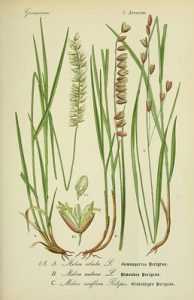
Melica ciliata, Melica nutans, Melica uniflora, botanical plate circa 1903
The foliage is deciduous to semi-evergreen, depending on winter severity. It also varies among species. The leaves are long, narrow, linear, arched, sometimes slightly rolled inward, and somewhat rough to the touch, resembling grass. They range from fresh green to light or dark green or grey-green. These are quite characteristic leaves of the Poaceae family.
From this mass of gramineous foliage, panicle inflorescences emerge from May to July-August. They sway with the slightest breeze. While Melica uniflora features fine, white spikelets resembling a shower of rice grains, Melica ciliata displays creamy white, feathery flower spikes over 10 cm long, adorned with numerous bristles (or silky cilia), and Melica altissima ‘Atropurpurea’ stands out with its shiny purple spikelets up to 25 cm long.
Highly graphic, they are prized for fresh or dried flower arrangements during the summer season.
Silver, pearly beige, brown, or purple after flowering, these delicate spikes bear fruit and turn into seeds, leading to self-seeding. This grass naturalises easily in light soil.
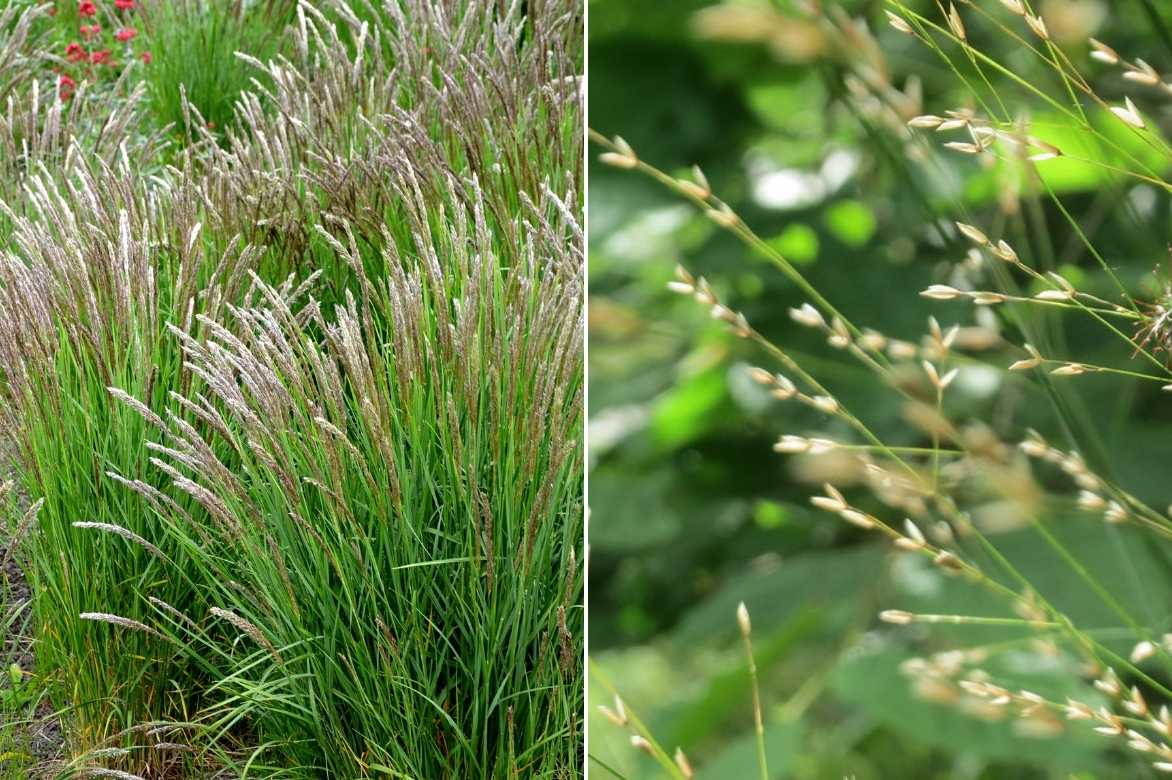
Melica ciliata on the left and Melica uniflora on the right
Read also
Grasses: which variety to choose?Main species and varieties
Sun, partial shade, or even full shade—there’s at least one for every situation.
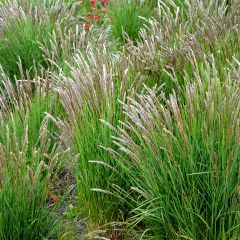
Melica ciliata
- Flowering time June to August
- Height at maturity 80 cm

Melica altissima Atropurpurea
- Flowering time June to August
- Height at maturity 80 cm
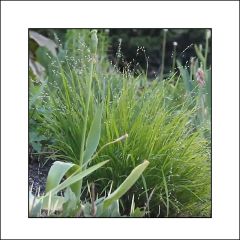
Melica uniflora f. albida
- Flowering time June to August
- Height at maturity 45 cm
Discover other Melica
View all →Available in 2 sizes
Available in 2 sizes
Available in 1 sizes
Available in 1 sizes
Planting Melica
Where to plant?
Melica is known for its excellent hardiness, down to -20-25°C. This ornamental grass is very easy to grow in most regions. It thrives in any good garden soil, not too acidic, remaining slightly moist in summer and well-drained in winter, as it only fears excess water. Poorly drained soils are often fatal and shorten its lifespan. Most Melica species tolerate stony and/or calcareous soils quite well. Melica ciliata is the best suited for dry soils and arid exposures, tolerating drought well. It is ideal for rockeries and dry slopes that are difficult to vegetate.
Generally, Melica performs best in sunny, non-scorching exposures or light shade (Melica ciliata and altissima) and in any moist soil. Melica nutans prefers shaded locations, while Melica uniflora can grow in shade. In very hot regions, if the exposure is too scorching, the foliage may go dormant in summer, without harming the plant.
Melica works wonders when planted in scattered groups in large wild and meadow-like beds, natural meadows, along pathways, at the edge of a grove, or at the base of a shrub hedge. It creates beautiful graphic and luminous effects. Some smaller species also make excellent ground covers in partial shade. It will also thrive in a large pot on the terrace, allowing you to enjoy its colourful spikelets.
When to plant Melica?
In colder regions, plant your Melica preferably in spring to give it a full season to establish. Plant once the risk of frost has passed.
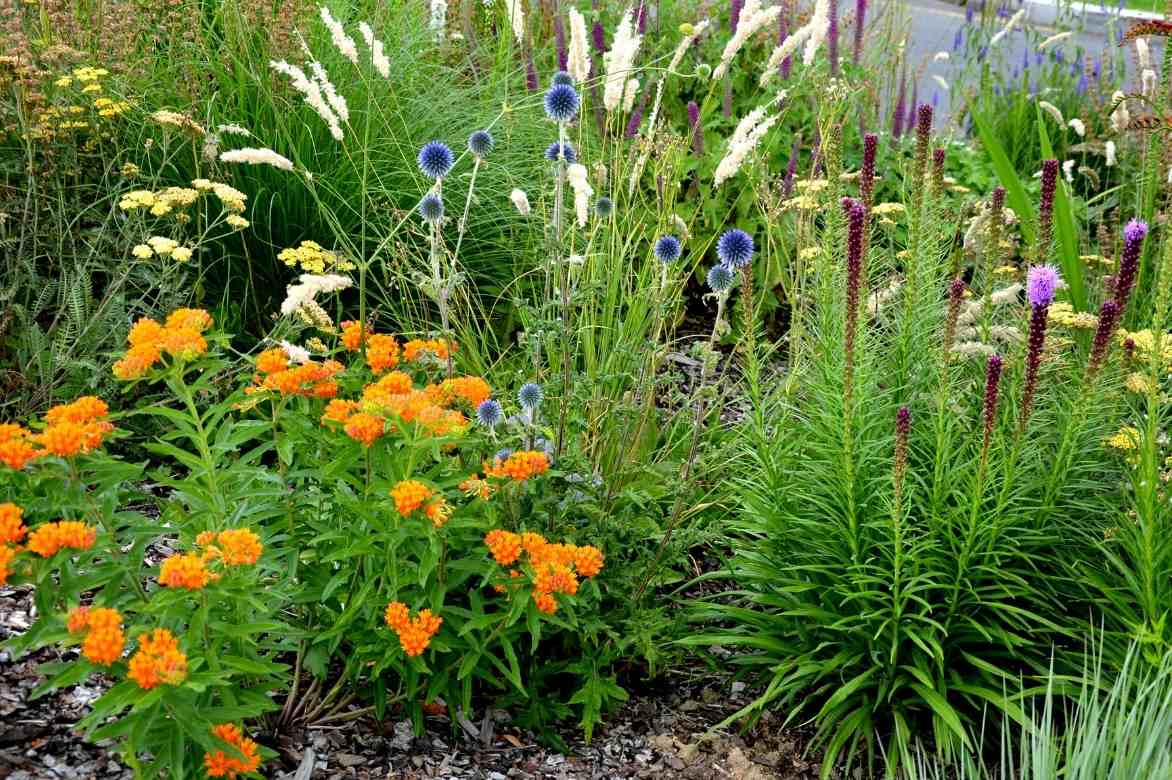
Melica ciliata alongside perennials that tolerate poor soils
How to plant?
In the ground
Plan for 3 to 5 plants per square metre for a lush effect. Add a generous shovelful of gravel to heavy or compact soil to improve drainage. Incorporate some well-rotted compost if the soil is too poor.
- Weed the soil thoroughly
- Loosen the soil well
- Dig a hole about twice the size of the root ball
- Add a drainage layer at the bottom of the hole
- Place the root ball in the centre of the hole with the collar level with the soil surface
- Backfill and lightly firm
- Water generously
- Mulch to reduce watering needs
→ Also check out our guide on planting ornamental grasses!
In a pot
- Choose a pot at least 50 cm in all directions with drainage holes
- Place a layer of clay pebbles (or gravel, a mix of stones, etc.) at the bottom
- Mix equal parts garden soil and potting compost
- Add some coarse river sand
- Plant your Melica without burying the foliage
- Backfill with the mixture, lightly firm
- Water
- Apply an organic or mineral mulch
Maintenance and growing advice
In the ground
Once well established, it is an ideal grass for sustainable gardens, requiring little water and no maintenance. However, ensure you water regularly during the first year after planting to help the young plant establish well. After that, unless there is severe and prolonged drought, Melica will thrive on rainwater alone.
At the end of winter, tidy up the clump by removing dry parts with pruning shears or shears. You can cut the plant back to 10-15 cm above the soil, and it will quickly produce new foliage.
In pots
Remember to water Melica grown in pots, as they will need more water, especially during very hot weather. Allow the compost to dry out slightly between waterings. Every spring, work in 2-3 handfuls of compost by lightly scratching the surface. Repot every 2 or 3 years into a larger container and top-dress in between.
Melica is unaffected by diseases and pests.
Multiplication
We recommend dividing clumps as the simpler method, although sowing melic grass is also possible.
Division
This is best done when the plant is well-rooted, after 3 to 4 years of cultivation.
- In spring or early autumn, dig around the clump using a sharp spade.
- Lift the root ball and divide it into several sections.
- Replant these sections, ensuring they have roots, immediately in their final location after preparing the soil.
- Water generously.
Sowing
Melica grasses self-seed well without becoming invasive. You can collect seeds and sow them in spring, in trays or buckets filled with a very fine mix of compost and sand. Keep the substrate moist but not waterlogged, at a temperature of 20°C until the young plants emerge. Transplant them into individual buckets to strengthen them before planting them in the garden in early autumn or the following spring.
Pairing ideas
With their airy habit and ease of cultivation, Melica grasses offer numerous pairing possibilities, bringing a light and poetic touch to the garden.
They are easy to integrate into a naturalistic meadow. Place them in small touches among other summer-flowering perennials, such as poppies, cornflowers, nigella, Linum perenne, and Achillea millefolium.
For a naturalistic effect, punctuate the scene with other ornamental grasses featuring decorative spikes, such as Miscanthus and Stipas.
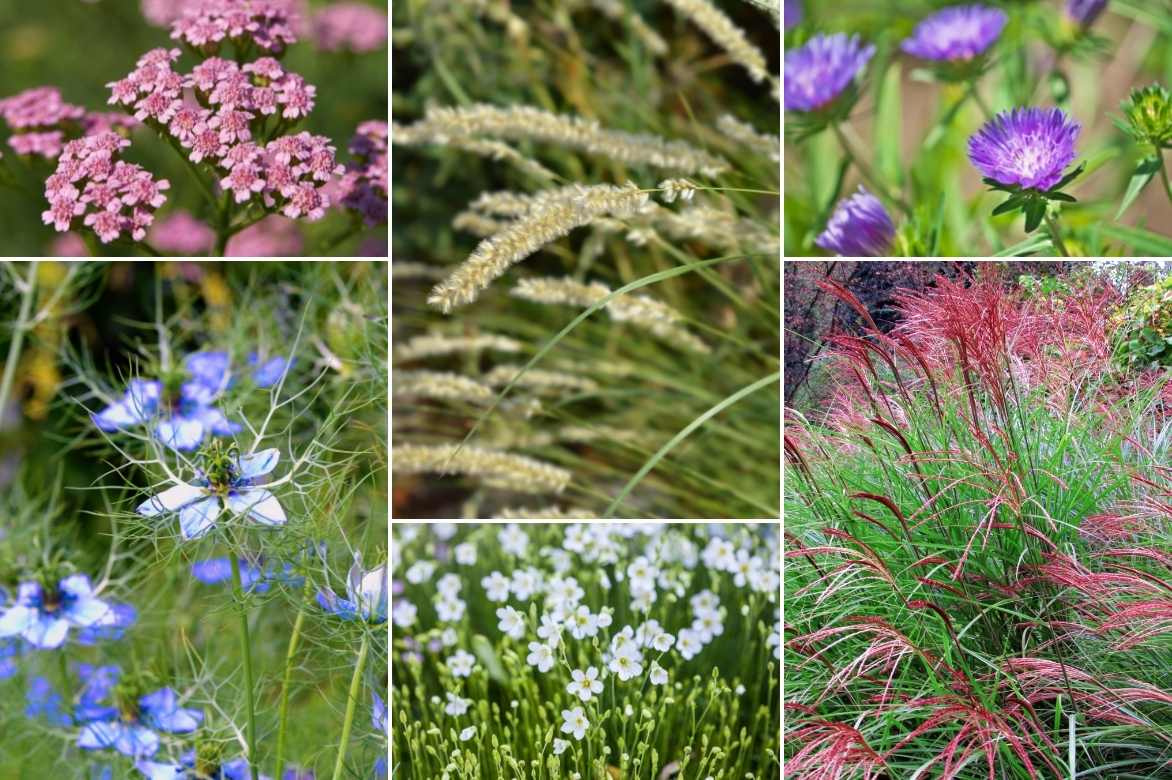
Melica ciliata at the centre, alongside Achillea millefolium, nigella, flax, Stokesias, and Miscanthus
In a cottage-style border, pair them with fluid flowering perennials such as cosmos and Verbena bonariensis. They will contrast with the more compact and regular forms of Echinacea, dahlias, Oriental poppies, or soften those of Echinops ritro and Eryngium planum. Add colourful touches with Gauras and Asters, known for their light flowering.
In a gravel garden, place them near the rounded heads of ornamental alliums and other wild grasses like fountain grass.
Useful resources
- Incorporate ornamental grasses into a naturalistic meadow!
- Graphic and airy, our ornamental grasses are a must-have
- Get inspired with all our tips on ornamental grasses
- Melica: 6 ideas to pair them
- Subscribe!
- Contents



































Comments